MUSIC VIDEO
For our music video, we included numerous conventions from the music videos of the indie and indie-rock genre. We took influence from many real media products within the genre, as shown by our steal-o-matic which includes the 12 music videos we used. However there were some music videos which we turned to more than others for decisions on style, genre conventions, camera work and framing, including:
 |
| 'Still Into You' by Paramore |
 |
| 'Girls' by The 1975 |
Genre Conventions
When looking at the conventions within the music video, we looked to Andrew Goodwin's theory for music videos. Goodwin states that music videos demonstrate genre characteristics. By following genre conventions, the audience will be able to recognise and relate to the video, meaning they will enjoy watching it more.
We looked at common conventions for indie music videos and tried to conform to them, however we chose to break a few to make our video stand out compared to other conventional indie music videos.
We looked at common conventions for indie music videos and tried to conform to them, however we chose to break a few to make our video stand out compared to other conventional indie music videos.
Conventions We Followed:
1. Performance Shots
It is very common for indie and indie-rock videos to have performance shots within the music video and is usually expected by the audience. This is to show the audience what they look like when performing, and to attract them to buy tickets to watch a live performance. We followed this convention and took influence from indie artists The 1975 and Mcfly.
2. Star Identity Reflected in Mise-en-Scene
Using Richard Dyer's theory on Star Identity, who explains that "a star is an image, not a real person, that is constructed out of a range of materials". A successfully constructed star identity is sold to the audience who will relate to, aspire to and remember them. We created our band's identity to match the indie genre conventions.
Main Conventions We Broke/Developed:
1. All-Male Band
Having an all-male band is a very common convention of indie bands, some examples of this are Biffy Clyro, Mcfly and The 1975.
We chose to have a female bass player along with the two other male members. This was to make our band slightly different and more diverse compared to conventional all-male indie bands.
It is very common for indie and indie-rock videos to have performance shots within the music video and is usually expected by the audience. This is to show the audience what they look like when performing, and to attract them to buy tickets to watch a live performance. We followed this convention and took influence from indie artists The 1975 and Mcfly.
 |
| Our band 'Pilgrim' performing in the music video |
Using Richard Dyer's theory on Star Identity, who explains that "a star is an image, not a real person, that is constructed out of a range of materials". A successfully constructed star identity is sold to the audience who will relate to, aspire to and remember them. We created our band's identity to match the indie genre conventions.
Main Conventions We Broke/Developed:
Having an all-male band is a very common convention of indie bands, some examples of this are Biffy Clyro, Mcfly and The 1975.
We chose to have a female bass player along with the two other male members. This was to make our band slightly different and more diverse compared to conventional all-male indie bands.
We tried to represented genders equally and did not have one dominate the video more than the other by giving the bass player and drummer equal screen time. The lead had more screen time for obvious reasons, but did not dominate the video due to his gender. By representing the female bassist as confident, we could widen the appeal of our band and attract female audiences who can relate and aspire to this positively represented female band member.
2. Complex Narrative
It is typical for indie music videos to have a complex narrative either cutting between performance shots, or having an entirely narrative-based music video to convey a message. Examples of this are (left to right) 'Breezeblocks' by Alt-J and 'Why'd You Only Call Me When You're High?' by Arctic Monkeys, which are both entirely narrative-based.
Cultural and Postmodern References
Andrew Goodwin also explains, in his theory for music videos, that these media texts usually contain intertextuality. Intertextuality is the referencing of other media texts within a media text. Music videos may use this to help the audience to relate more to it. Including postmodern references also heightens the videos repeatability, as viewers may want to watch the video again to look out for all of the references.
For example in our music video, we used retro toys from the 1990 and 2000 eras, which should be recognised by our target audience, from their childhood. We tried to use obvious examples and typical iconography from those time periods. In our video, we used:
Another reference, which is not related to nostalgia, that we included was to the rap genre, more specifically to the famous and iconic music video 'Make It Rain' by Fat Joe featuring Lil Wayne, which is already referenced in many popular media texts. We thought by including a parody of this with Monopoly money, it would add comedy and reflect the band's fun identity.
An example of indie music videos demonstrating intertextuality is 'Dani California' by The Red Hot Chili Peppers, which makes many postmodern references to different bands representing periods of music throughout the decades.
Lyrics and Visuals
Goodwin also stated that there is a relationship between the visuals and the lyrics, and/or music. At the beginning of the project we analysed the lyrics and decided that the song had strong themes of friendship, nostalgia and youth. We chose to illustrate these themes throughout the video through the band interaction (friendship) and the use of old toys and other retro props (nostalgia and youth).
 |
| "now the day is ending and we're getting older" |
The example above, showing a relationship between the lyrics and visuals, illustrates how they are getting older but they still want to do childish things, like dress up in superhero costumes.
Real Media Texts Relating Visuals and Lyrics
In The 1975's music video for 'Girls', the band sings about a girl being seventeen years old, and is reflected visually by a girl blowing out her '17' candles on a birthday cupcake.
In 'Just One Of The Guys' by Jenny Lewis, the artist sings the words 'just one of the guys' then cutting to a shot of the girls dressed up as guys.
Performance, Narrative and Progression
According to theorist Simon Frith, there are three types of music video: performance, narrative and conceptual. Most videos are a combination of two or sometimes all three. Our music video is performance-based and conceptual. We felt the themes of the song would be best conveyed without a narrative.
A real media text which is performance-based and conceptual is 'Love Is On The Radio' by Mcfly. This music video cuts between shots of the band performing (left) and the band (or other members of the cast) playing with props without the instruments (right).
Our video does not have a conventional narrative, however it does visually progress as the music video goes on. To do this, we increased the pace of the editing and size of the props eventually finishing with the finale confetti and balloon shots.
The Ending
Carol Vernallis states that the narrative in a music video is not always complete, and may not have a real ending, which can appear fragmented to the viewer. This applies to our video as it does not have an established ending or a fixed narrative.
We end the video with the band relaxing and brushing confetti off of their clothes after the music has stopped, indicating that the video is over, but not really establishing a real conclusion.
Another video which ends in a similar way is 'Girls' by The 1975, with the band taking their instruments off and leaving the set.
Camerawork and Framing
According to Goodwin, the record company have a need for close-up shots (or visual hooks/beauty shots) of the artist in a music video. We conformed to this and included close-up shots of each of the band members. By doing this we also had variety of shot types throughout the video.
We also conformed to having framing which was extreme. We included a range of shot types from wide/establishing shot to extreme close-up.
Handheld, Floating Camera Shots
For the performance shots, we used many handheld, floating camera shots to add more movement to the shots. By doing this, the viewer also feels more immersed in the video.
This was influenced by Dog Is Dead's music video for 'Do The Right Thing' and from The Vaccine's video 'Norgaard' (left to right).
Editing
Cutting To The Beat
Carol Vernallis states that "editing may match the musical phrases or beats". We conformed to this and cut to the beat in the majority of the shots to make the editing subtle, making sure the attention was not on the editing, but on the band and the action.
Jump Cuts
Vernallis also says that music videos typically break or disrupt conventions of continuity editing. To conform to this we used some stylised editing, such as jump cuts to speed moments of the video up. An example of a real artist using jump cuts in their music video is Taylor Swift in 'Shake It Off'.
Overlayed Text
Other stylised editing we used was overlaying text on top of the image in the last shot, in order to provide a noticeable ending for the audience. This was influenced by the convention in indie music videos of displaying the song and/or artist name somewhere in the video. A few examples were 'Blame It On Me' by George Ezra and 'Teenage Daughter' by Dog Is Dead.
Fluid Identities
Following the same convention of discontinuous editing in music videos, we could display the band differently with contrasting identities. We referenced David Gauntlett and his theory about how identities are fluid and can be easily changed and transformed to meet the audience's different needs.
An example of this is in the 5 Second Of Summer music video for 'Don't Stop', which interchanges between two identities of the band: the serious and cool musicians performing their song, and the same funny and childish band dressing up in superhero costumes.
By doing this, we illustrate the band's cool, more serious personality in the performance shots against the band's fun, youthful and playful identity in the prop shots.
ALBUM COVER
The forms and conventions our album cover used are made clear in the Prezi that I made below.
WEBSITE
Our band website conforms to many of the typical conventions not only for an indie artist's website, but also for a new artist's website. Some of our main influential websites were Rizzle Kicks, The 1975, Dan Croll and Dog Is Dead.
Here is a slideshow I made about the typical conventions of an indie band's website and we how conformed and broke these conventions.
Interactivity
Opportunities for the audience to interact with the website is a common convention across all genres. We largely drew inspiration from Dog Is Dead, Rizzle Kicks and Dan Croll's websites.
Here are two of many examples we drew a large amount of inspiration from:
We conformed to this by creating a 'Free EP' page to download Pilgrim's free song. We also decided to have an interactive news feed like the Rizzle Kicks page. By doing this, the user is kept interested and stay on the website for longer.
Purchasing Opportunities
We also saw that it was common for websites to have purchasing opportunities throughout the website. One example where we used purchasing opportunities in our website is when we advertised the new album on the news page with links to Amazon, iTunes and The Pilgrim Store to purchase it.
This is a very common convention among artists, examples we took inspiration from were Rizzle Kicks and Dan Croll.
Participatory Culture
We referred to Henry Jenkins' theory on Participatory Culture, which is "a culture with relatively low barriers to artistic expression" and that "not every member must contribute, but all must believe they are free to contribute when ready and that what they contribute will be appropriately valued".
It is conventional to promote participatory culture, so we did on our artist website. To effectively do this we included:
Social Media
We first included clear social media links in the header of the website, then again noticeably integrated into the homepage news feed. This was largely influenced from the Rizzle Kicks website.
By giving the audience links to the band's social media, they can be kept up-to-date on the band member's lives, which can make fans feel closer to them and more included.
The social media links also makes the band's content more shareable as the fans have the ability to share photos, videos and text posts (like tweets).
Twitter Competition
The competition we created requires the user to tweet their favourite childhood toy to the band's Twitter. This urges the audience to create their own content and participate. Also by seeing other fans' tweets, they will feel like part of the fan base.
'Sign Up' Page
By signing up, the fans can receive exclusive content and news from the band. This brings about a sense of community for the audience as they can keep updated with the band like other fans who have also signed up.
This was mainly influenced by the Dog Is Dead website:
This page allows the audience to write a personal message to the band, creating a feeling of connection with the artist. The ability to contact the band without signing up is less conventional for bands in general, however we wanted to include it to further encourage the sense of community.
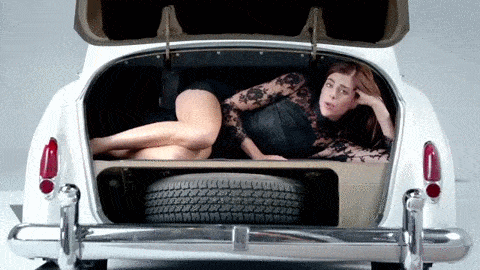 |
| "But she can't be what you need if she's seventeen" |
In The 1975's music video for 'Girls', the band sings about a girl being seventeen years old, and is reflected visually by a girl blowing out her '17' candles on a birthday cupcake.
 |
| "No matter how hard I try to be just one of the guys" |
In 'Just One Of The Guys' by Jenny Lewis, the artist sings the words 'just one of the guys' then cutting to a shot of the girls dressed up as guys.
Performance, Narrative and Progression
According to theorist Simon Frith, there are three types of music video: performance, narrative and conceptual. Most videos are a combination of two or sometimes all three. Our music video is performance-based and conceptual. We felt the themes of the song would be best conveyed without a narrative.
A real media text which is performance-based and conceptual is 'Love Is On The Radio' by Mcfly. This music video cuts between shots of the band performing (left) and the band (or other members of the cast) playing with props without the instruments (right).
Our Music Video
The performance-based aspect of the video is when the band are performing in the studio with the instruments.
The conceptual part of the video is when the band are playing in the studio with the props, conveying the main themes of friendship, nostalgia and youth.
Our video does not have a conventional narrative, however it does visually progress as the music video goes on. To do this, we increased the pace of the editing and size of the props eventually finishing with the finale confetti and balloon shots.
The Ending
Carol Vernallis states that the narrative in a music video is not always complete, and may not have a real ending, which can appear fragmented to the viewer. This applies to our video as it does not have an established ending or a fixed narrative.
We end the video with the band relaxing and brushing confetti off of their clothes after the music has stopped, indicating that the video is over, but not really establishing a real conclusion.
Another video which ends in a similar way is 'Girls' by The 1975, with the band taking their instruments off and leaving the set.
Camerawork and Framing
According to Goodwin, the record company have a need for close-up shots (or visual hooks/beauty shots) of the artist in a music video. We conformed to this and included close-up shots of each of the band members. By doing this we also had variety of shot types throughout the video.
We also conformed to having framing which was extreme. We included a range of shot types from wide/establishing shot to extreme close-up.
For the performance shots, we used many handheld, floating camera shots to add more movement to the shots. By doing this, the viewer also feels more immersed in the video.
This was influenced by Dog Is Dead's music video for 'Do The Right Thing' and from The Vaccine's video 'Norgaard' (left to right).
Editing
Cutting To The Beat
Carol Vernallis states that "editing may match the musical phrases or beats". We conformed to this and cut to the beat in the majority of the shots to make the editing subtle, making sure the attention was not on the editing, but on the band and the action.
Jump Cuts
Vernallis also says that music videos typically break or disrupt conventions of continuity editing. To conform to this we used some stylised editing, such as jump cuts to speed moments of the video up. An example of a real artist using jump cuts in their music video is Taylor Swift in 'Shake It Off'.
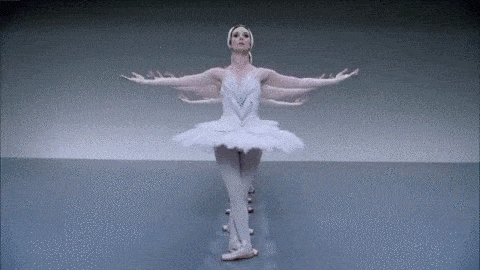 |
| Taylor Swift 'Shake It Off' |
Overlayed Text
Other stylised editing we used was overlaying text on top of the image in the last shot, in order to provide a noticeable ending for the audience. This was influenced by the convention in indie music videos of displaying the song and/or artist name somewhere in the video. A few examples were 'Blame It On Me' by George Ezra and 'Teenage Daughter' by Dog Is Dead.
Fluid Identities
Following the same convention of discontinuous editing in music videos, we could display the band differently with contrasting identities. We referenced David Gauntlett and his theory about how identities are fluid and can be easily changed and transformed to meet the audience's different needs.
An example of this is in the 5 Second Of Summer music video for 'Don't Stop', which interchanges between two identities of the band: the serious and cool musicians performing their song, and the same funny and childish band dressing up in superhero costumes.
By doing this, we illustrate the band's cool, more serious personality in the performance shots against the band's fun, youthful and playful identity in the prop shots.
ALBUM COVER
The forms and conventions our album cover used are made clear in the Prezi that I made below.
WEBSITE
Our band website conforms to many of the typical conventions not only for an indie artist's website, but also for a new artist's website. Some of our main influential websites were Rizzle Kicks, The 1975, Dan Croll and Dog Is Dead.
Here is a slideshow I made about the typical conventions of an indie band's website and we how conformed and broke these conventions.
Interactivity
Opportunities for the audience to interact with the website is a common convention across all genres. We largely drew inspiration from Dog Is Dead, Rizzle Kicks and Dan Croll's websites.
Here are two of many examples we drew a large amount of inspiration from:
 |
| Rizzle Kicks have an interactive news feed with videos, tweets and Instagram photos |
 |
| Dog Is Dead have a page on the website where the user can download the free EP through Facebook or by entering their details |
 |
| News Feed |
 |
| Free EP Page |
Purchasing Opportunities
We also saw that it was common for websites to have purchasing opportunities throughout the website. One example where we used purchasing opportunities in our website is when we advertised the new album on the news page with links to Amazon, iTunes and The Pilgrim Store to purchase it.
This is a very common convention among artists, examples we took inspiration from were Rizzle Kicks and Dan Croll.
We referred to Henry Jenkins' theory on Participatory Culture, which is "a culture with relatively low barriers to artistic expression" and that "not every member must contribute, but all must believe they are free to contribute when ready and that what they contribute will be appropriately valued".
It is conventional to promote participatory culture, so we did on our artist website. To effectively do this we included:
Social Media
We first included clear social media links in the header of the website, then again noticeably integrated into the homepage news feed. This was largely influenced from the Rizzle Kicks website.
By giving the audience links to the band's social media, they can be kept up-to-date on the band member's lives, which can make fans feel closer to them and more included.
The social media links also makes the band's content more shareable as the fans have the ability to share photos, videos and text posts (like tweets).
Twitter Competition
The competition we created requires the user to tweet their favourite childhood toy to the band's Twitter. This urges the audience to create their own content and participate. Also by seeing other fans' tweets, they will feel like part of the fan base.
'Sign Up' Page
By signing up, the fans can receive exclusive content and news from the band. This brings about a sense of community for the audience as they can keep updated with the band like other fans who have also signed up.
This was mainly influenced by the Dog Is Dead website:
'Contact Us' Page
This page allows the audience to write a personal message to the band, creating a feeling of connection with the artist. The ability to contact the band without signing up is less conventional for bands in general, however we wanted to include it to further encourage the sense of community.










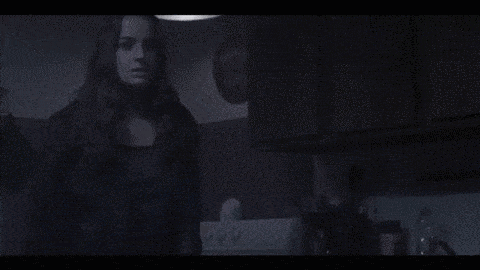
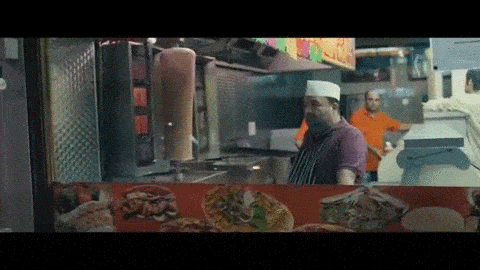








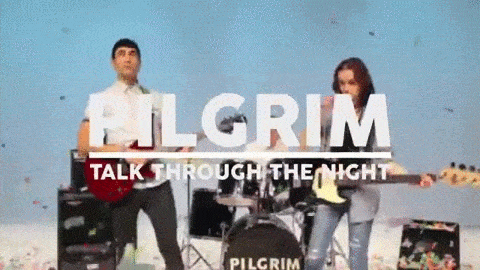
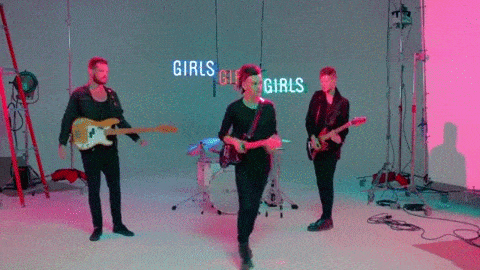
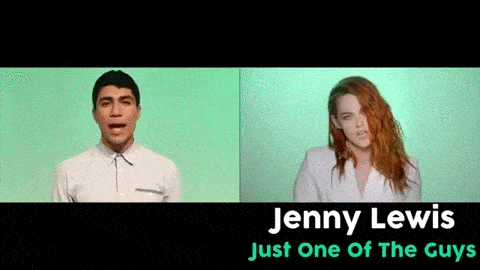

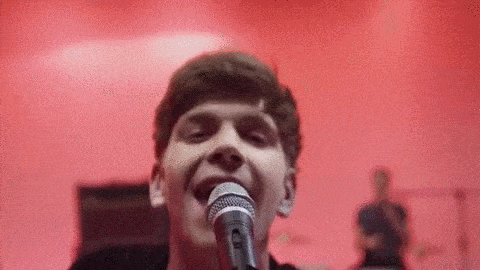




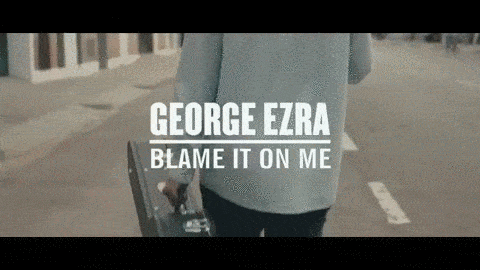


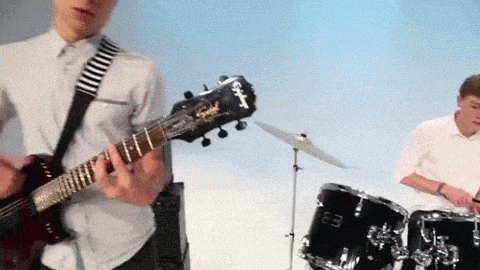














No comments:
Post a Comment